Weiyi Wu
Synthetic Clinical Notes for Rare ICD Codes: A Data-Centric Framework for Long-Tail Medical Coding
Nov 18, 2025Abstract:Automatic ICD coding from clinical text is a critical task in medical NLP but remains hindered by the extreme long-tail distribution of diagnostic codes. Thousands of rare and zero-shot ICD codes are severely underrepresented in datasets like MIMIC-III, leading to low macro-F1 scores. In this work, we propose a data-centric framework that generates high-quality synthetic discharge summaries to mitigate this imbalance. Our method constructs realistic multi-label code sets anchored on rare codes by leveraging real-world co-occurrence patterns, ICD descriptions, synonyms, taxonomy, and similar clinical notes. Using these structured prompts, we generate 90,000 synthetic notes covering 7,902 ICD codes, significantly expanding the training distribution. We fine-tune two state-of-the-art transformer-based models, PLM-ICD and GKI-ICD, on both the original and extended datasets. Experiments show that our approach modestly improves macro-F1 while maintaining strong micro-F1, outperforming prior SOTA. While the gain may seem marginal relative to the computational cost, our results demonstrate that carefully crafted synthetic data can enhance equity in long-tail ICD code prediction.
SoundMind: RL-Incentivized Logic Reasoning for Audio-Language Models
Jun 15, 2025Abstract:While large language models have shown reasoning capabilities, their application to the audio modality, particularly in large audio-language models (ALMs), remains significantly underdeveloped. Addressing this gap requires a systematic approach, involving a capable base model, high-quality reasoning-oriented audio data, and effective training algorithms. In this study, we present a comprehensive solution: we introduce the Audio Logical Reasoning (ALR) dataset, consisting of 6,446 text-audio annotated samples specifically designed for complex reasoning tasks. Building on this resource, we propose SoundMind, a rule-based reinforcement learning (RL) algorithm tailored to endow ALMs with deep bimodal reasoning abilities. By training Qwen2.5-Omni-7B on the ALR dataset using SoundMind, our approach achieves state-of-the-art performance in audio logical reasoning. This work highlights the impact of combining high-quality, reasoning-focused datasets with specialized RL techniques, advancing the frontier of auditory intelligence in language models. Our code and the proposed dataset are available at https://github.com/xid32/SoundMind.
Music's Multimodal Complexity in AVQA: Why We Need More than General Multimodal LLMs
May 27, 2025Abstract:While recent Multimodal Large Language Models exhibit impressive capabilities for general multimodal tasks, specialized domains like music necessitate tailored approaches. Music Audio-Visual Question Answering (Music AVQA) particularly underscores this, presenting unique challenges with its continuous, densely layered audio-visual content, intricate temporal dynamics, and the critical need for domain-specific knowledge. Through a systematic analysis of Music AVQA datasets and methods, this position paper identifies that specialized input processing, architectures incorporating dedicated spatial-temporal designs, and music-specific modeling strategies are critical for success in this domain. Our study provides valuable insights for researchers by highlighting effective design patterns empirically linked to strong performance, proposing concrete future directions for incorporating musical priors, and aiming to establish a robust foundation for advancing multimodal musical understanding. This work is intended to inspire broader attention and further research, supported by a continuously updated anonymous GitHub repository of relevant papers: https://github.com/xid32/Survey4MusicAVQA.
Assessing and Mitigating Medical Knowledge Drift and Conflicts in Large Language Models
May 12, 2025Abstract:Large Language Models (LLMs) have great potential in the field of health care, yet they face great challenges in adapting to rapidly evolving medical knowledge. This can lead to outdated or contradictory treatment suggestions. This study investigated how LLMs respond to evolving clinical guidelines, focusing on concept drift and internal inconsistencies. We developed the DriftMedQA benchmark to simulate guideline evolution and assessed the temporal reliability of various LLMs. Our evaluation of seven state-of-the-art models across 4,290 scenarios demonstrated difficulties in rejecting outdated recommendations and frequently endorsing conflicting guidance. Additionally, we explored two mitigation strategies: Retrieval-Augmented Generation and preference fine-tuning via Direct Preference Optimization. While each method improved model performance, their combination led to the most consistent and reliable results. These findings underscore the need to improve LLM robustness to temporal shifts to ensure more dependable applications in clinical practice.
Learning Musical Representations for Music Performance Question Answering
Feb 10, 2025
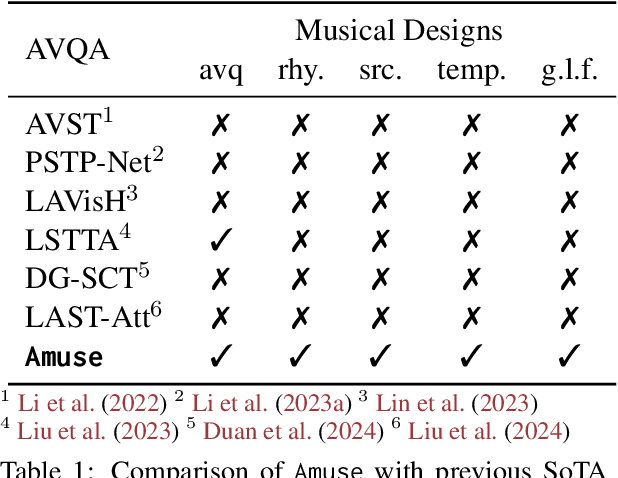


Abstract:Music performances are representative scenarios for audio-visual modeling. Unlike common scenarios with sparse audio, music performances continuously involve dense audio signals throughout. While existing multimodal learning methods on the audio-video QA demonstrate impressive capabilities in general scenarios, they are incapable of dealing with fundamental problems within the music performances: they underexplore the interaction between the multimodal signals in performance and fail to consider the distinctive characteristics of instruments and music. Therefore, existing methods tend to answer questions regarding musical performances inaccurately. To bridge the above research gaps, (i) given the intricate multimodal interconnectivity inherent to music data, our primary backbone is designed to incorporate multimodal interactions within the context of music; (ii) to enable the model to learn music characteristics, we annotate and release rhythmic and music sources in the current music datasets; (iii) for time-aware audio-visual modeling, we align the model's music predictions with the temporal dimension. Our experiments show state-of-the-art effects on the Music AVQA datasets. Our code is available at https://github.com/xid32/Amuse.
Temporal Working Memory: Query-Guided Segment Refinement for Enhanced Multimodal Understanding
Feb 09, 2025



Abstract:Multimodal foundation models (MFMs) have demonstrated significant success in tasks such as visual captioning, question answering, and image-text retrieval. However, these models face inherent limitations due to their finite internal capacity, which restricts their ability to process extended temporal sequences, a crucial requirement for comprehensive video and audio analysis. To overcome these challenges, we introduce a specialized cognitive module, temporal working memory (TWM), which aims to enhance the temporal modeling capabilities of MFMs. It selectively retains task-relevant information across temporal dimensions, ensuring that critical details are preserved throughout the processing of video and audio content. The TWM uses a query-guided attention approach to focus on the most informative multimodal segments within temporal sequences. By retaining only the most relevant content, TWM optimizes the use of the model's limited capacity, enhancing its temporal modeling ability. This plug-and-play module can be easily integrated into existing MFMs. With our TWM, nine state-of-the-art models exhibit significant performance improvements across tasks such as video captioning, question answering, and video-text retrieval. By enhancing temporal modeling, TWM extends the capability of MFMs to handle complex, time-sensitive data effectively. Our code is available at https://github.com/xid32/NAACL_2025_TWM.
Memory-Efficient Sparse Pyramid Attention Networks for Whole Slide Image Analysis
Jun 13, 2024



Abstract:Whole Slide Images (WSIs) are crucial for modern pathological diagnosis, yet their gigapixel-scale resolutions and sparse informative regions pose significant computational challenges. Traditional dense attention mechanisms, widely used in computer vision and natural language processing, are impractical for WSI analysis due to the substantial data scale and the redundant processing of uninformative areas. To address these challenges, we propose Memory-Efficient Sparse Pyramid Attention Networks with Shifted Windows (SPAN), drawing inspiration from state-of-the-art sparse attention techniques in other domains. SPAN introduces a sparse pyramid attention architecture that hierarchically focuses on informative regions within the WSI, aiming to reduce memory overhead while preserving critical features. Additionally, the incorporation of shifted windows enables the model to capture long-range contextual dependencies essential for accurate classification. We evaluated SPAN on multiple public WSI datasets, observing its competitive performance. Unlike existing methods that often struggle to model spatial and contextual information due to memory constraints, our approach enables the accurate modeling of these crucial features. Our study also highlights the importance of key design elements in attention mechanisms, such as the shifted-window scheme and the hierarchical structure, which contribute substantially to the effectiveness of SPAN in WSI analysis. The potential of SPAN for memory-efficient and effective analysis of WSI data is thus demonstrated, and the code will be made publicly available following the publication of this work.
Improving Representation Learning for Histopathologic Images with Cluster Constraints
Oct 18, 2023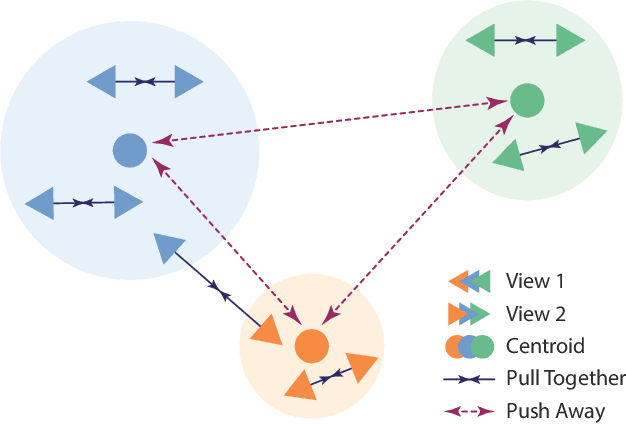

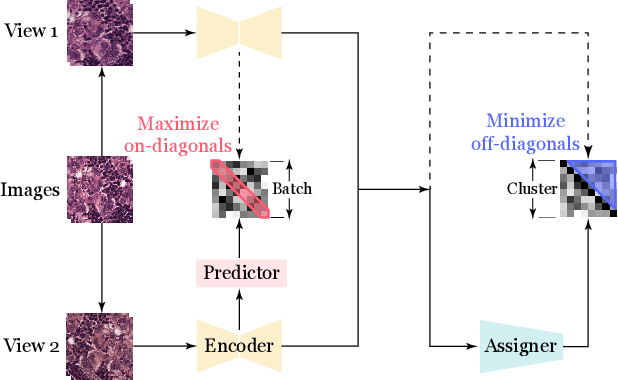
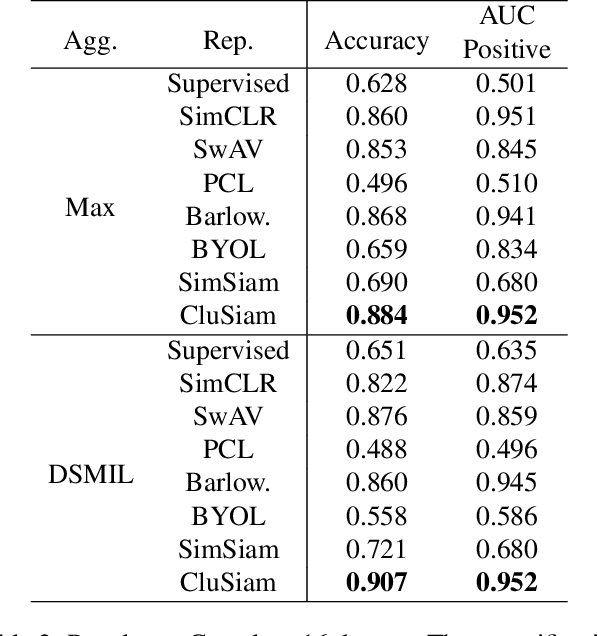
Abstract:Recent advances in whole-slide image (WSI) scanners and computational capabilities have significantly propelled the application of artificial intelligence in histopathology slide analysis. While these strides are promising, current supervised learning approaches for WSI analysis come with the challenge of exhaustively labeling high-resolution slides - a process that is both labor-intensive and time-consuming. In contrast, self-supervised learning (SSL) pretraining strategies are emerging as a viable alternative, given that they don't rely on explicit data annotations. These SSL strategies are quickly bridging the performance disparity with their supervised counterparts. In this context, we introduce an SSL framework. This framework aims for transferable representation learning and semantically meaningful clustering by synergizing invariance loss and clustering loss in WSI analysis. Notably, our approach outperforms common SSL methods in downstream classification and clustering tasks, as evidenced by tests on the Camelyon16 and a pancreatic cancer dataset. The code and additional details are accessible at: https://github.com/wwyi1828/CluSiam.
* Accepted by ICCV2023
Multi-Ontology Refined Embeddings (MORE): A Hybrid Multi-Ontology and Corpus-based Semantic Representation for Biomedical Concepts
Apr 14, 2020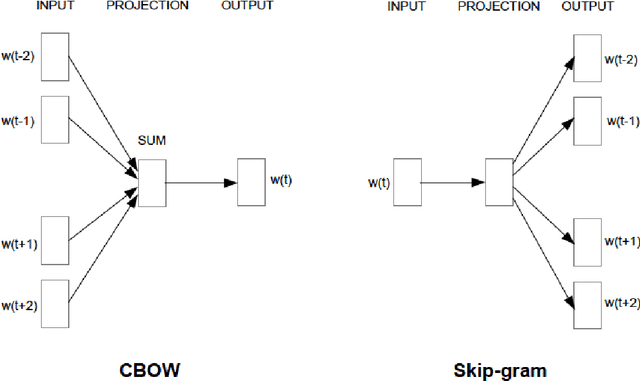
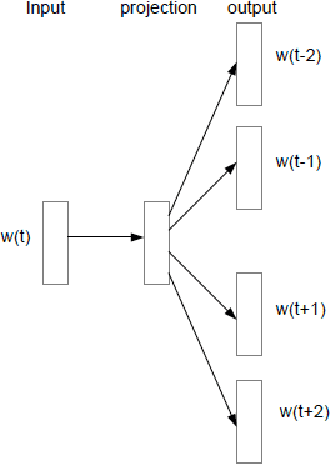
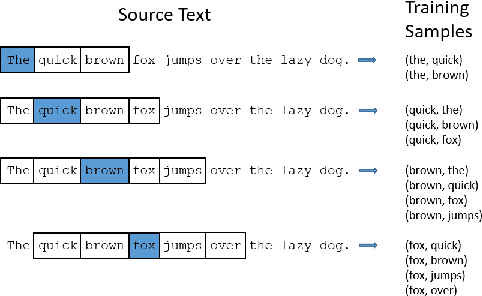
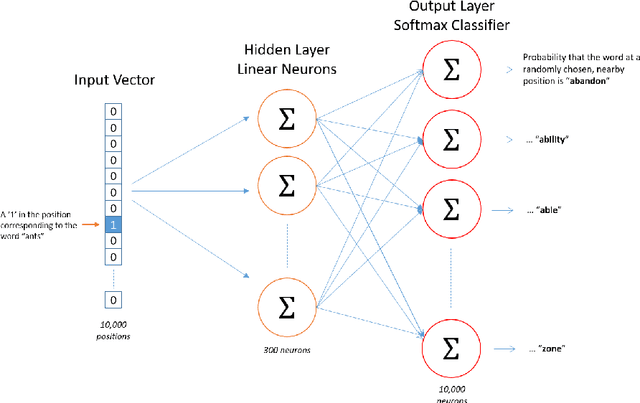
Abstract:Objective: Currently, a major limitation for natural language processing (NLP) analyses in clinical applications is that a concept can be referenced in various forms across different texts. This paper introduces Multi-Ontology Refined Embeddings (MORE), a novel hybrid framework for incorporating domain knowledge from multiple ontologies into a distributional semantic model, learned from a corpus of clinical text. Materials and Methods: We use the RadCore and MIMIC-III free-text datasets for the corpus-based component of MORE. For the ontology-based part, we use the Medical Subject Headings (MeSH) ontology and three state-of-the-art ontology-based similarity measures. In our approach, we propose a new learning objective, modified from the Sigmoid cross-entropy objective function. Results and Discussion: We evaluate the quality of the generated word embeddings using two established datasets of semantic similarities among biomedical concept pairs. On the first dataset with 29 concept pairs, with the similarity scores established by physicians and medical coders, MORE's similarity scores have the highest combined correlation (0.633), which is 5.0% higher than that of the baseline model and 12.4% higher than that of the best ontology-based similarity measure.On the second dataset with 449 concept pairs, MORE's similarity scores have a correlation of 0.481, with the average of four medical residents' similarity ratings, and that outperforms the skip-gram model by 8.1% and the best ontology measure by 6.9%.
 Add to Chrome
Add to Chrome Add to Firefox
Add to Firefox Add to Edge
Add to Edge